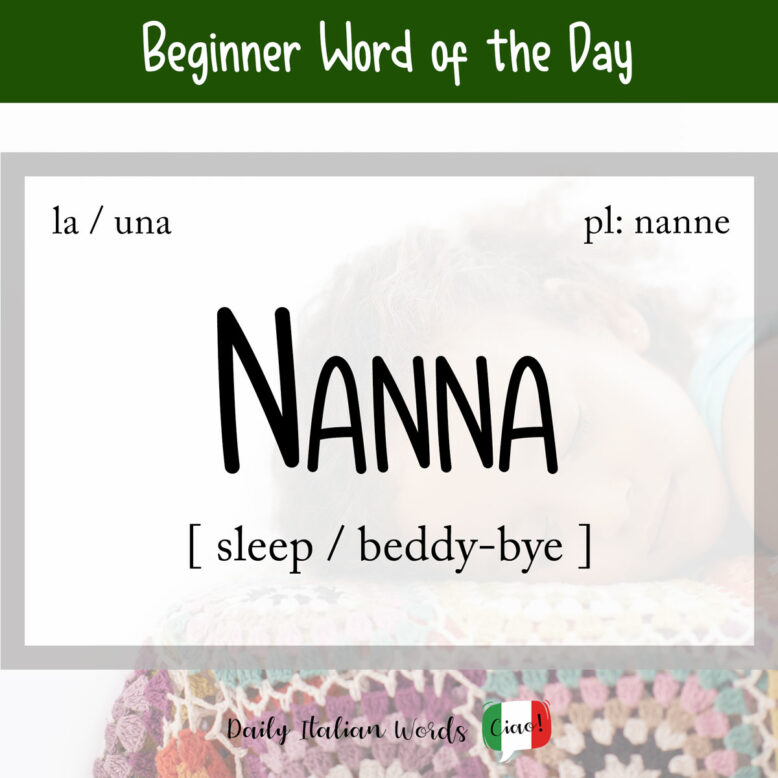Most of you have probably come across the words dormire (the verb to sleep) and sonno (the noun sleep) at some point in your Italian studies. But did you know that there is another equally common way to talk about sleep in Italian?
The word we’ll be looking at today is nanna, which is a cute, childish way of referring to sleep in Italian.

It is a feminine noun, so it takes the following definite and indefinite articles:
- la nanna = the sleep
- le nanne = the sleeps
- una nanna = a sleep
- (delle) nanne = (some) sleeps
Nanna is considered a phonosymbolic term, which is just a fancy way of describing a word that sounds like what it represents.
In English, we also have a number of cute expressions related to a child’s sleep such as beddy-bye, night-night and sleepy-bye, but unlike these expressions, nanna can be used more broadly to refer to afternoon naps as well. You can use towards adults too, but only in a playful way.
Four common verbs with which nanna often appears are:
- fare la nanna = to sleep / to go to sleep / to go to bed / to have a sleep
- andare a nanna = to go to sleep / bed
- mettere a nanna = to put to bed
- mandare a nanna = to send to bed
È ora di fare la nanna.
It’s time to sleep.

The expression mandare a nanna (lit. to send to sleep) also has a second meaning which has nothing to do with sleep whatsoever. It can be a gentle way to describe objects that you no longer use and have discarded, much like the English expression to put out to pasture.
Ho mandato a nanna il mio vecchio computer.
I put my old computer out to pasture.
This word also appears in the term ninnananna (or ninna nanna), which is what Italians call a lullaby.
Heather Broster is a graduate with honours in linguistics from the University of Western Ontario. She is an aspiring polyglot, proficient in English and Italian, as well as Japanese, Welsh, and French to varying degrees of fluency. Originally from Toronto, Heather has resided in various countries, notably Italy for a period of six years. Her primary focus lies in the fields of language acquisition, education, and bilingual instruction.


